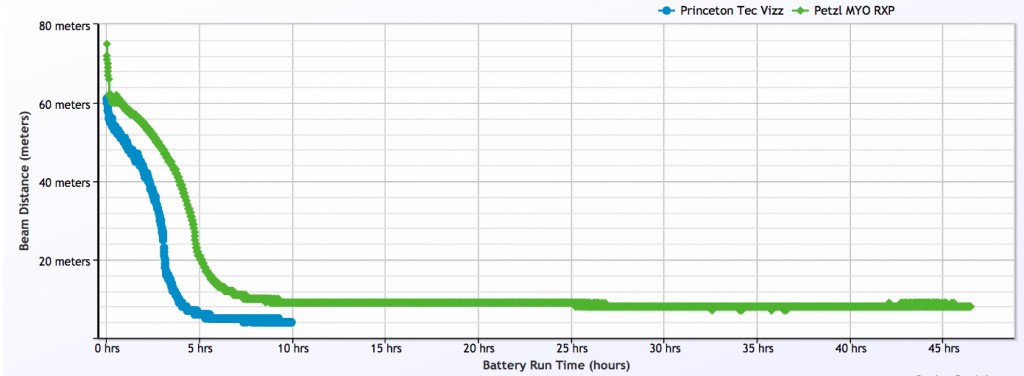Extreme battery life of our headlamps
The long endurance of our headlamps is one of the key things, all the top headlamp features contribute to this, from the most efficient CREE LEDs, to Samsung li-ion batteries with the highest real capacity, to strong cables with low voltage drop, low transient resistance connectors, great cooling on a revolutionary copper PCB and ultra high efficiency electronics that are typically always above 90%, often even up to 95-98%.
As a result, our headlamps provide the highest lumen output of any headlamp on the market with today's best technology.
Endurance for Lucifer headlamps
Each of our headlamps has 5-6 basic sustained light modes, we adjust their intensities so that there is a visible difference between them and so that the modes cover all the situations in which you want to shine.
The lowest mode with a ten to two hundred hour duration is for shining around the tent, hiking.
The next higher modes are for recreational and racing sports with endurance typically 20h, 10h, 4h and around 2h on the highest mode. The 10h mode is for all night racing (e.g. 24h races, Rogaining, ultra running) or recreational night cycling.
The listed endurance is realistic and determines the minimum time the headlamp will be on for a given mode. It will then always switch to lower modes where it will still stay lit long enough (up to hours) for you to complete your activity. The electronics reduce the modes when it is unable to maintain a minimum of 70% of the original intensity.
ANSI/NEMA FL 1-2009 standard and its shortcomings
There is a generally accepted standard for handheld and headlamps called ANSI/NEMA FL 1-2009, which specifies battery life as the time by which light output drops to 10% of the initial value measured 30 seconds after switching on. That is, we consider a light that initially shines, for example, 1000 lumens and after two hours only 100 lumens to be in the 1000 lumen mode for 2 hours. You can see for yourself, this is nonsense! The tenfold difference in luminosity is really marked and the user cannot miss it. This part of the standard is therefore, in our opinion, flawed and when it was approved it was probably lobbied by large companies that produce unregulated luminaires (whose luminous flux decreases from the beginning), which can then increase the luminous duration on paper.
We don't want to mislead our customers with fancy lumens or hours of light! That is why we define the lumen output of headlamps as the time by which the light output drops to 70% of the original intensity. This is telling and correct, even though we lose hours and minutes of lumen output that could be counted in the lumen life on paper.
Here's an endurance graph taken from OutdoorGearLab to illustrate what we're talking about. You can replace the scale on the left (beam distance = range) with luminosity. The lights are supposed to last 50h on paper, but at the given luminosity they only last 1-2 hours in real life! The lights are clearly unregulated according to the chart - they do not have constant lumen control (their luminosity decreases from the beginning).
